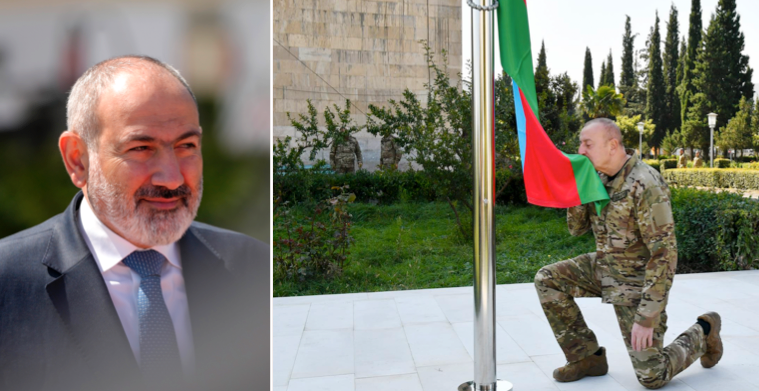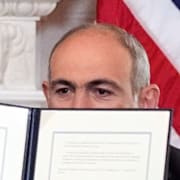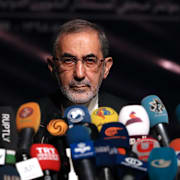bakgrund
Nagorno-Karabach
Wikipedia (en)
Artsakh ( ART-sa(h)kh), officially the Republic of Artsakh or the Republic of Nagorno-Karabakh ( nə-GOR-noh kər-ə-BAHK), was a breakaway state in the South Caucasus whose territory was internationally recognised as part of Azerbaijan. Between 1991 and 2023, Artsakh controlled parts of the former Nagorno-Karabakh Autonomous Oblast, including its capital Stepanakert. It had been an enclave within Azerbaijan from the 2020 Nagorno-Karabakh war until the 2023 Azerbaijani offensive, when the Azerbaijani military took control over the remaining territory controlled by Artsakh. Its only overland access route to Armenia after the 2020 war was via the 5 km (3.1 mi) wide Lachin corridor, which was placed under the supervision of Russian peacekeeping forces.The predominantly Armenian-populated region of Nagorno-Karabakh was claimed by both the Azerbaijan Democratic Republic and the First Republic of Armenia when both countries became independent in 1918 after the fall of the Russian Empire. A brief war over the region broke out in 1920. The dispute was largely shelved after the Soviet Union established control over the area, and created the Nagorno-Karabakh Autonomous Oblast (NKAO) within the Azerbaijan SSR in 1923. Throughout the Soviet period, Armenians in the Nagorno-Karabakh Autonomous Oblast were heavily discriminated against. The Soviet Azerbaijani authorities worked to suppress Armenian culture and identity in Nagorno-Karabakh, pressured Armenians to leave the region and encouraged Azerbaijanis to settle within it, although Armenians remained the majority population.In the lead up to the fall of the Soviet Union in the late 1980s, the region re-emerged as a source of dispute between Armenia and Azerbaijan. In 1991, a referendum held in the NKAO and the neighbouring Shahumyan Province resulted in a declaration of independence. The conflict erupted into a full-out war in 1992. The war was won by Artsakh with support from Armenia. Although a ceasefire agreement was signed in 1994, the frozen situation left the predominantly Armenian-populated territory de facto independent, with a self-proclaimed government in Stepanakert, but still heavily reliant on and closely integrated with Armenia, in many ways functioning as a de facto part of Armenia. Even though Armenia never officially recognized the region's independence, it became the main financial and military supporter of the territory. In 2017, a referendum in the area approved a new constitution that transformed the system of government from a semi-presidential to a presidential democracy with a unicameral legislature in addition to changing the name of the state from the Republic of Nagorno-Karabakh to the Republic of Artsakh, although both names remained official.
From 1994 until 2020, Armenian and Azerbaijani troops remained separated by a contested line of contact which saw sporadic deadly incidents during the interceding years. In 2020, a new war was fought in the region, with Azerbaijan achieving victory and regaining all the surrounding occupied districts and a significant portion of Artsakh's claimed territory. The Lachin corridor linking Artsakh to Armenia was blockaded by Azerbaijan in December 2022. In September 2023, Azerbaijan launched another military offensive. The government of Artsakh agreed to disarm and enter talks with Azerbaijan, prompting a flight of ethnic Armenians from the area. On 28 September 2023, the president of Artsakh subsequently signed a decree to dissolve all of the republic's institutions by 1 January 2024, bringing its existence to an end. By 1 October 2023, almost the entire population of the region had fled to Armenia.




